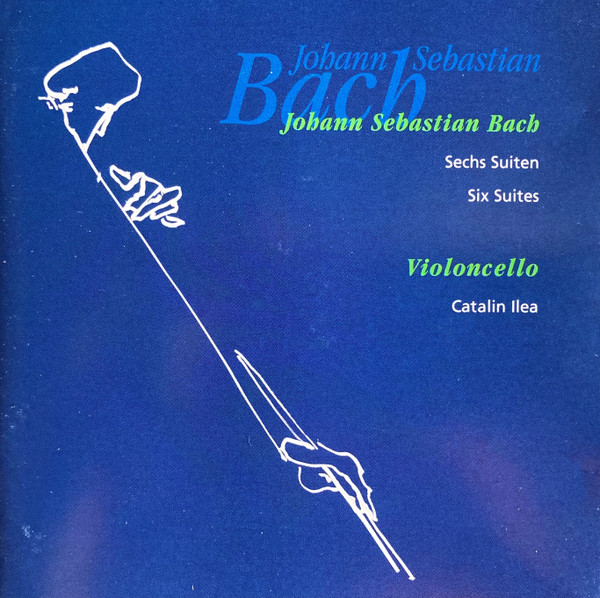
Catalin Ilea. Bach Cello Suites. One World music CD OWMCD 02-2. Reviewed via CD quality Tidal stream & original CD.
Released 2002.
Recorded 2000-1 at Siemensvilla Berlin.
The Cellist.
Catalin Ilea now 83 years old was born in Romania. He moved to Germany in 1977 and appears to have focussed on teaching and chamber music. Much of his somewhat limited recording work includes music by his compatriot Enescu. In his later years he appears to have concentrated on music competition judging. There is little further to find out online. All of this would suggest that this recording might be somewhat underwhelming…….. However, please read on as this is in my opinion, one of the best finds I have come across in the 4 or so years of reviewing Bach Cello Suite recordings!
I have persistently made reference to how the big-name cellists fail to outshine some of the lesser known cellists. There are many excellent recordings reviewed on this site by cellists I guarantee you will never have heard of. In addition, there are well known cellists such as Rostropovich and Gendron who although hugely respected for other recording works have failed to produce outstanding versions of the Suites in my opinion. It is a tremendously subjective issue, but I believe I have given good evidence for my verdict in the reviews of the latter two.
General comments.
The overall sound impresses with a broad soundstage and good balance of natural acoustic and clear, precise details of the performance. In the excellent notes Ilea comments on the use of “one point” stereo microphones. The cello has a lovely full but unforced sound with little obvious vibrato. There is some finger tapping and odd bow sounds which is also referenced by the performer. He preferred to leave these in as the natural consequence of close microphone placement. My colleague Mark finds this intolerable. I find I can filter it out and enjoy the music!
The stylistic approach to the interpretation I suggest falls into the hybrid group. In fact, again the notes give many clues as to the performers mindset with this. He clearly favours a spontaneous evolution of interpreting the Suites recognising there has been scant guidance from the start and much opportunity for personalisation. Ilea refers to a version “valid for our times.”
Movement by movement.
The phrasing of the slower Allemandes is probing and searching. Sometimes, with other performers, I find my attention wandering in these movements but not in this case. There is always something of interest that the performer must show us.
Faster movements are very well articulated and played with attack but not brutality. There is always rhythm, a sense of momentum and shaping to the musical line. Slower movements have plenty of legato bowing and sustained tone. Of note particularly in Sarabandes is the very deliberate placing of the notes within chords. Nothing appears left to chance or convenience. In these movements there is often some interesting ornamentation in repeats.
This then leads onto the outstanding strength of this performance which is the wonderful way in which he brings out the implied polyphony of much of the Suites. Time and time again I am grabbed by the distinction made between lower and upper parts. This seems to be a function of timing, placement of notes dynamics and pin point intonation.
Specifics
The movement I find most pleasure in is the third Prelude. Specifically, bar 36 contains descending notes returning to the C chord. This for me is a sublime moment where the B, A and G are placed exactly in the right time and loudness. The rest of the movement is excellent with the complex mid-section of cross string work sounding clear and musical. In many versions this becomes mush!
Back to the first Suite, the Prelude is played with a legato style, gentle undulations, tasteful phrasing, and rubato. There are good dynamics and use of different voices.
Ilea introduces and interesting extra in the fifth Suite with two versions of the Sarabande. One entirely pizzicato and the other bowed in its entirety as normal. I prefer this to the half and half approach taken by some but either way it is still played with feeling.
A slight disappointment comes with the sixth Suite. Although not detailed in the CD notes it would appear a different cello is used. This is referred to by Ilea in his notes as a five-string cello. The tone is much thinner, and the impact of the Prelude Courante and Gigue of this Suite is less than I was hoping but still played with great style. I suspect Ilea if able to re record would not use the same cello!
Conclusion.
This performance is essentially the one I would recommend to anyone other than a die-hard baroque lover! It basically always keeps my attention and pays repeated listening. My heart tells me it is great. My mind tells me it conforms closely to my ideal version but provides plenty of subtle variation that stimulates and draws me in to the music.
Have a listen to the third Suite on streaming services then if like me you are hooked try and obtain a copy of the CD. It can still be bought from the record label.
https://wp.one-world-music.com/product/494/
Charles.